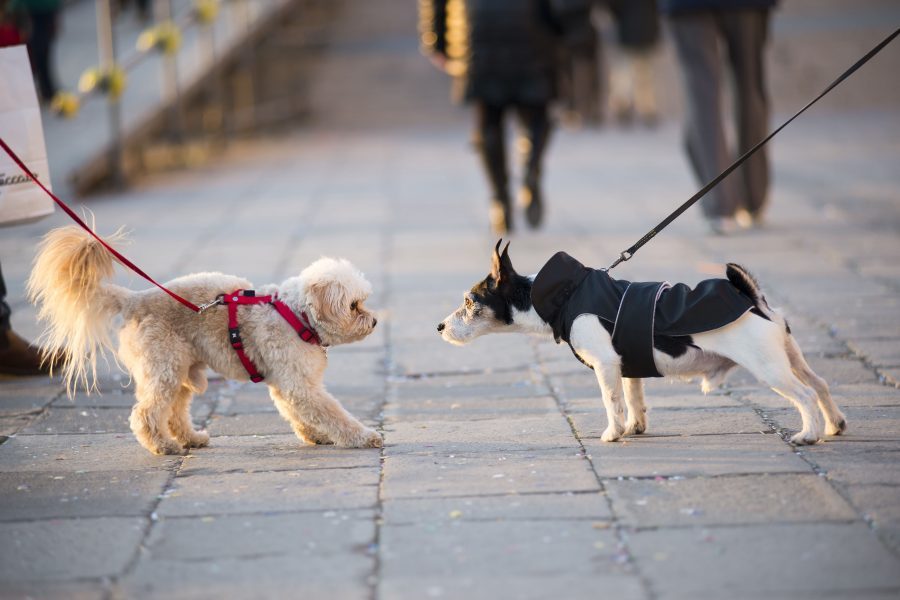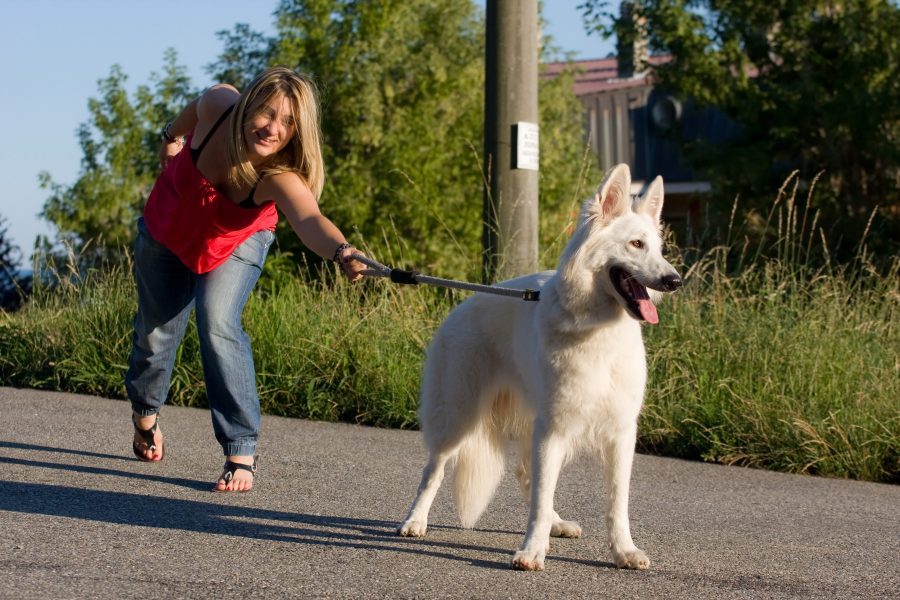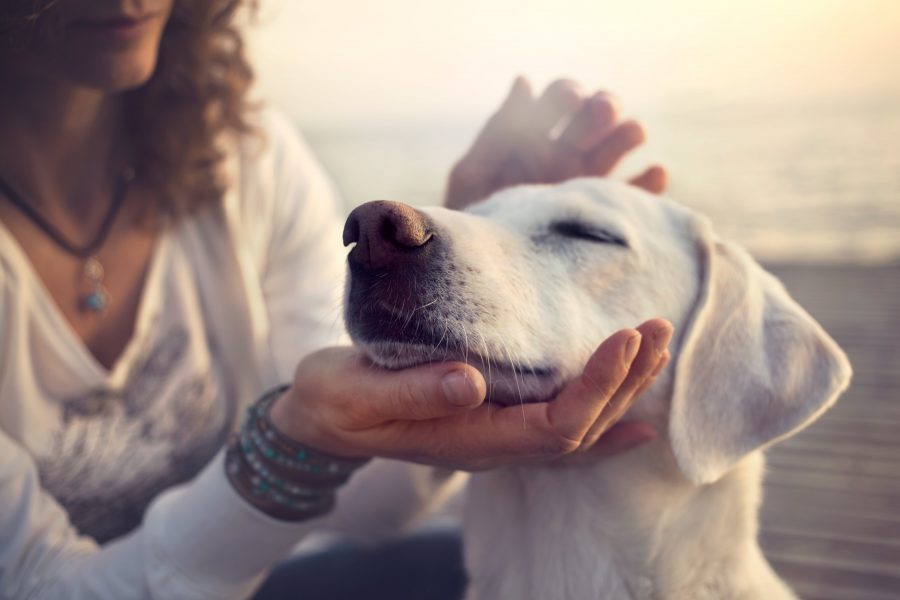For centuries now, dogs have been considered man’s best friend.
They are men’s faithful companions for as long as we let them, both at a psychological and physical level.
The man-dog friendship is an indissoluble bond which is impossible to replace.
Therefore, making the environment that surrounds us and our pets as pleasant as possible is essential.
However, when owners leave their homes with their pets, they should always keep in mind the importance of taking precautions and the existence of different regulations concerning dogs in public places.

There are various places meant for dogs, such as dog parks created specifically for our beloved friends, which, however, are regulated by specific rules and common sense.
First of all, it is advisable for owners to always keep a leash and muzzle with them, even if they consider their dogs as friendly and sociable.
Unfortunately, it is not possible to have full control of external factors such as the presence of more aggressive specimens – or strays.
These circumstances, in fact, could have a negative and unexpected influence even on the most docile and well-behaved dogs. It is always better to be prepared and be able to prevent unpleasant situations.
Therefore, it is advisable to avoid leaving your dog free to wander in the city streets or the countryside.
You should not also forget to take care of your pet’s hygiene. It is absolutely natural for dogs to do their business, however, it is the owners’ job to bring waste bags with them and to clean after their pets are done.
Sometimes, taking dogs for a walk may not be enough to provide for their need to run and to properly stretch their legs. For this purpose dog parks were invented.
Dog parks allow your pet to freely spend time with other four-legged friends as well as to vent his energy in an area especially equipped for dogs.
However, it is your duty to know what rules are in force in such areas, so as to be fully aware of what is and is not allowed in these parks.
Dog Park Rules and Regulations
There are are some useful information regarding dog parks rules and regulations which have been in force for years now. However, these rules must always be supported by common sense, good manners and respect for other dogs and their owners. Many rules coincide with those already mentioned above, but they may vary depending on the country.
Here is a list with good advice about the behaviour expected from both dogs and owners in dog parks and a brief explanation of the risks owners runs if they don’t stick to the rules:
- First of all, it is important to know your dog’s character well and to be aware of the difference in size between him and other dogs playing in the park. For example, if your dog is small in size, it is better to avoid letting him in the park if there are large dogs in the area;
- Dogs that have not been microchipped at the dogs registry office or that have not followed the necessary vaccinations for rabies or other contagious diseases are forbidden from entering in dog parks;
- For the same reason, aggressive dogs are not allowed in dog parks. This regulation has been put in place to avoid unpleasant accidents;
- Do not forget to always have your dog’s leash with you. From a legal standpoint, owners are fully responsible for any action of their dogs and, therefore, they may find themselves facing the legal consequences of said actions;
- Owners must always collect the waste of their pets. Dog parks are properly equipped with special bags and containers, since hygiene is always important;
- It is compulsory to always close the gate when entering and exiting dog parks. When dogs are fully immersed in play and running, if the gates are open, they could end up in the street, where cars circulate freely, which is dangerous for dog safety;
- It is forbidden to bring food or games in dog parks, both for your or for other dogs, since it could cause so much excitement such as to make it hard to manage, for example in case of fighting;
- In addition to the previous point, the presence of food in the area could be dangerous for another reason. Unfortunately, there are people who add poison to dog food. Therefore, it is important to always be alert when you see your dog chewing on something;
- Dogs in heat are also forbidden from entering dog parks. The presence of a female dog in heat may cause irrational excitement in other dogs and make it hard for their owners to control them.
However, we invite you to read the full list of rules and regulations regarding dog parks so as to avoid unpleasant and expensive fines.
You may find online several files regarding the dog parks legislation which applies to your country. However, each municipality may decide which rules to apply more strictly than others.
Dog Leash Laws
Dog owners knows very well how important are walks for their four-legged friends’ well-being. In fact, dogs need to go out for walks 3 or 4 times a day – ideally they should walk for 60-90 minutes.
However, people who take their pets out should be aware of the specific rules meant to protect the safety both of human beings and of animals.
For example, dog owners are required to have a muzzle and leash with them and, of course, they must collect their pets’ waste in public places.
Laws Concerning Dog Leash
Each state has its own regulations for dogs. In Italy, for example, matters relating to pets are regulated by one article and two orders.
The first one is Article 83 of the Decree of the President of the Republic of Italy, which is dated 8 February 1954, no. 320. According to it, dogs must wear a suitable muzzle when they are not kept on a leash if they are in a place open to the public. Moreover, they must have both muzzle and leash when they are in closed public places and on public transports.

As far as the two orders are concerned, the first one is classified as feasible and urgent and is about the protection of public safety in case of dog attacks.
According to this decree, the owner of the dog or those who hold it temporarily (so whoever is taking it for a walk) are required to:
- Always walk their dog on a leash with a maximum length of 1.5 metres;
- Carry a rigid or soft muzzle to be put on the dog upon request;
- Collect waste.
The second ordinance, instead, is dated 13 July 2016 and aims to extend the validity of the first one.
To sum up, the main duties of dog owners – or whoever is taking them for a walk – are to collect dog waste, walk them on a leash and always carry a muzzle with them.
A further obligation is to entrust your four-legged friend only to people who are able to manage him.
In particular, it is not allowed to leave dogs to children or elderly people because these subjects may have difficulty taking physical care of dogs, especially if they are large in size.
In short, walking your dog is a great activity, even more so in the summer. However, in order to do it, you must respect certain rules and use common sense to allow you, your pet and the people around you to have a pleasant time.
Teaching your Dog not to Pull on a Leash
As we have just seen, keeping your dog on a leash is mandatory and regulated by law. However, how can you teach your dog to be at his best behavior while walking on a leash?
There are a number of questions related to this issue to be addressed. The first is how to teach your dog not to bite the leash.
It is not unusual for dogs to do this, but what are the causes of such behavior? And what are the possible remedies?
If your dog bites the leash, it is probably because he thinks it is fun. Since they are puppies, dogs love playing at pulling things.
Therefore, if you pull the leash when your dog bites it, you will only make it more fun for him to persevere in this behavior.
One way of teaching your dog to stop behaving in such a manner is to train him with a rope.
When your dog tries to take it away from you by pulling, you should abandon the rope and show indifference. He will gradually stop considering it a fun game.
Another issue that certainly interests dog owners is how to teach dogs how to walk on a leash.
As far as the habit of pulling the leash is concerned, it must be pointed out that, most of the times, bad habits are unconsciously encouraged by dogs owners themselves.
When dogs are still puppies, owners tend to overlook such kind of bad habits and limit themselves only to complaints.
However, the best thing to do when your dog pulls the leash is to stop walking and stay still.
In fact, from an early age, dogs associate “pulling” with the possibility of moving forward. Therefore, if owners show that by not pulling the leash they will be able to walk, they will not be encouraged to pull.
It is possible to train even the largest dogs, even if it is obviously harder. Remember to stop and restart walking only when your pet stops pulling. Over time your dog will understand that, in order to move forward, he has to stop pulling.
In conclusion, let us address a last topic related to walking with dogs: how to teach dogs to be at their best behavior without a leash.

Teaching your dog to walk without a leash is certainly not an easy task and training should start when he is still a puppy.
In order to teach your dog to follow you and respond to your calls, you should start by letting him walk alone for short distances in quiet places and rewarding him when he follows your commands.
You can then increase the distance, but only if the previous exercises have been successful. Always use the same expression to call him back and don’t forget to give him a reward.
Although the path may be long, in the end it will give you great satisfaction and your four-legged friend will have the opportunity to follow you in open places independently.
